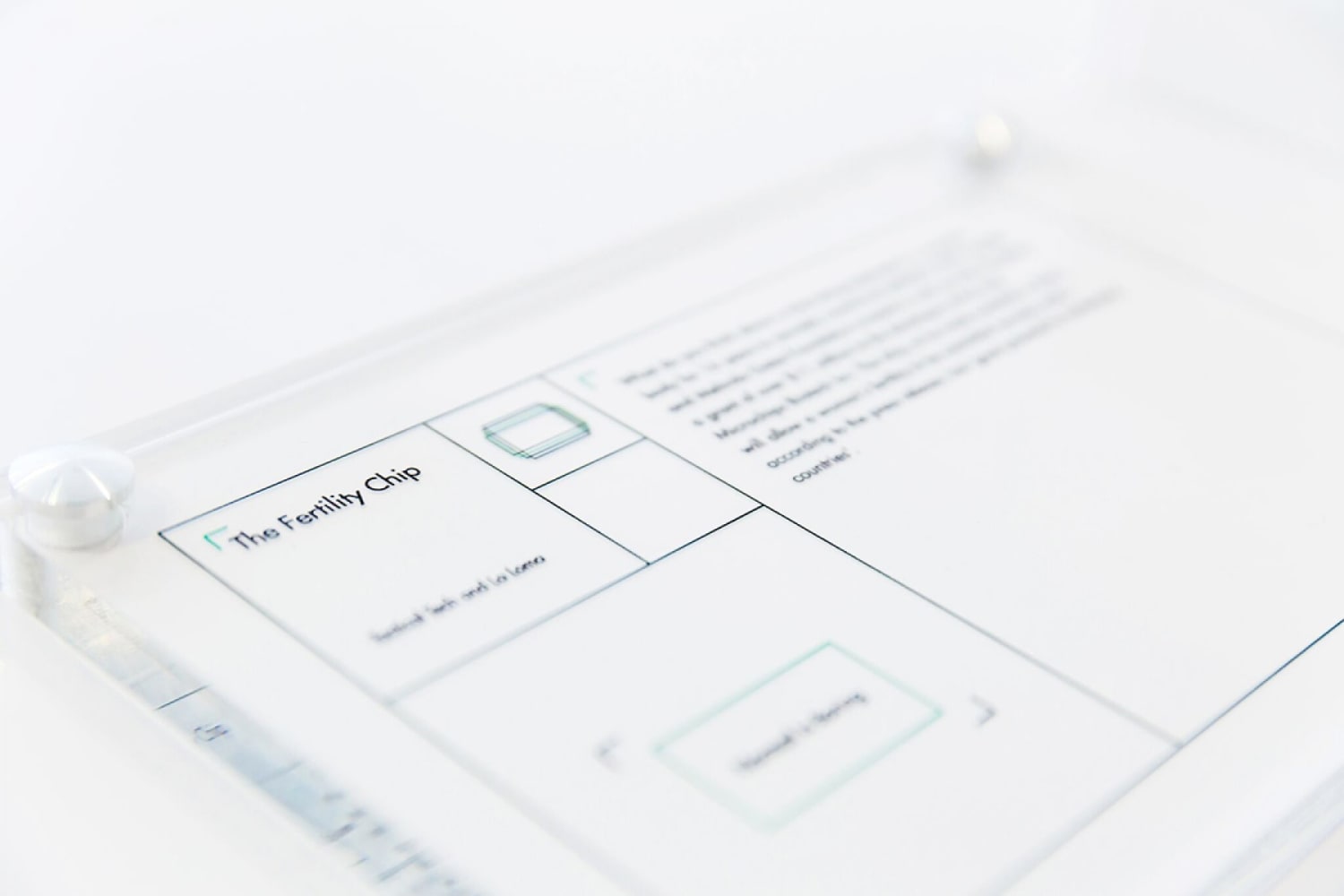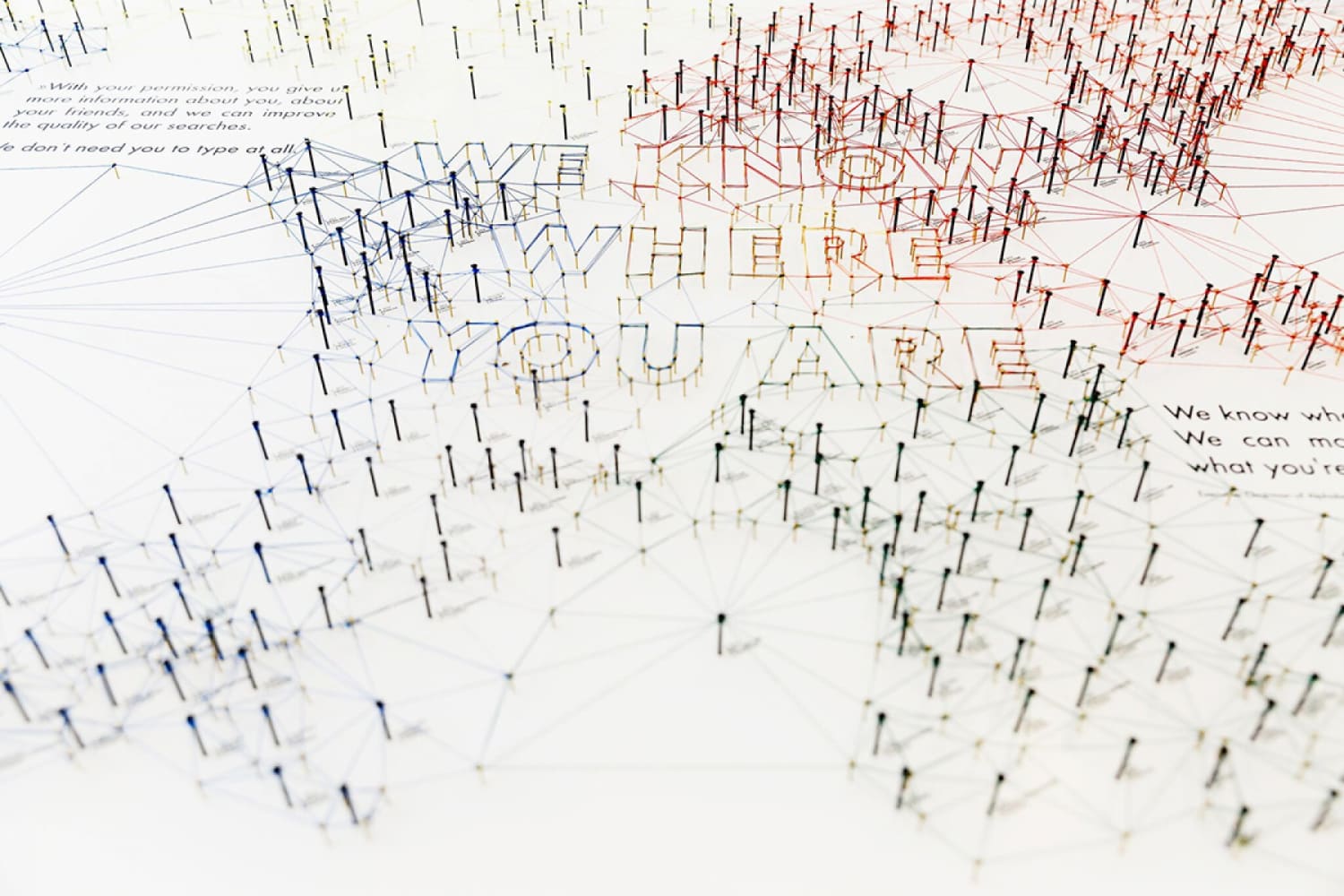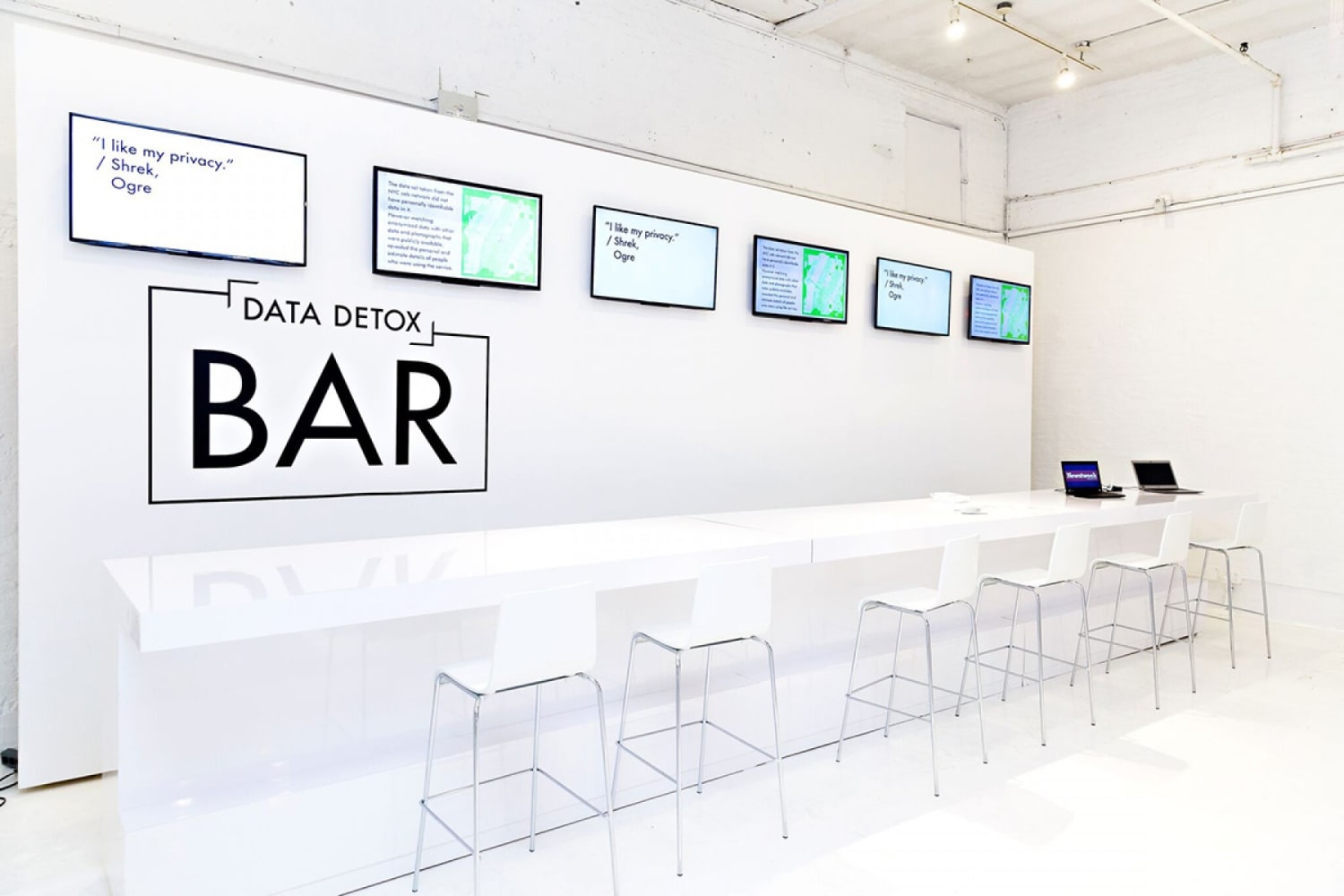“This is a new environment,” said Marek Tuszynski, cofounder and creative director of the Technical Technology Collective. “It’s not just a new data business model, but it’s a very new social, cultural political environment. We need to have that conversation not about user interfaces but the larger responsibility. What kind of society we are creating, where a small number of people have much more knowledge and understanding about very deep and intimate behaviors of all of us?”
The room’s first section, “Something to Hide,” challenges the perception of technology users who say they have nothing to hide. “What is this ‘nothing’ that we are really talking about?” Tuszynski asked. “What is the data that you are generating? Is this empowering you? Is this data the consumer is generating actually giving the same picture of you that you want to give them?”
For his book, Where The F**K Was I?, artist James Bridle complied maps of his locations for a full year using the log from his iPhone. In Aram Bartholl’s “Forgot your password?”, viewers can peruse 4.6 million passwords from a 2012 LinkedIn hack, arranged alphabetically into eight books. The Unfit Bits project showed how a Fitbit could be “hacked” through a metronome to provide fake activity information to insurance companies.
“Something to Hide” features interactive art projects displayed as if in a high-end retail boutique. According to Tuszynski, this was designed to give visitors a familiar access point. “Everybody knows what happens when you walk into Apple store. You can touch things and explore them, and talk to people around you,” he says. “Art puts you off: it’s too high-brow, it’s not accessible. And I think accessibility is super important.”
Further in the exhibit, a section called “Normal is Boring” explores the businesses behind data collection. A model of Mark Zuckerberg’s house encased in glass shows the contrast between Facebook’s policy of openness and Zuckerberg’s extreme personal privacy, while a multicolored web visualizes Alphabet’s many acquisitions. “The Fertility Chip,” a microchip to remotely control a woman’s fertility backed by The Gates Foundation, asks viewers to consider the level of control and accountability that tech companies may one day possess.
Near the back of the exhibit, “Big Momma” features nine surveillance applications that are already on the market. Some, like Silver Mother, are aimed directly at consumers. Silver Mother continually monitors the temperature, sleep, hydration and activity of senior citizens. Others come from government or nonprofit groups, like the iris scanning technology recently implemented by the United Nations to track Syrian refugees in Jordan’s Za’atari refugee camp.





